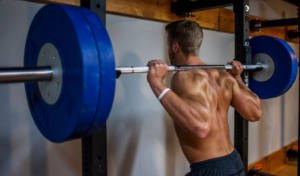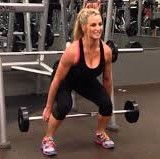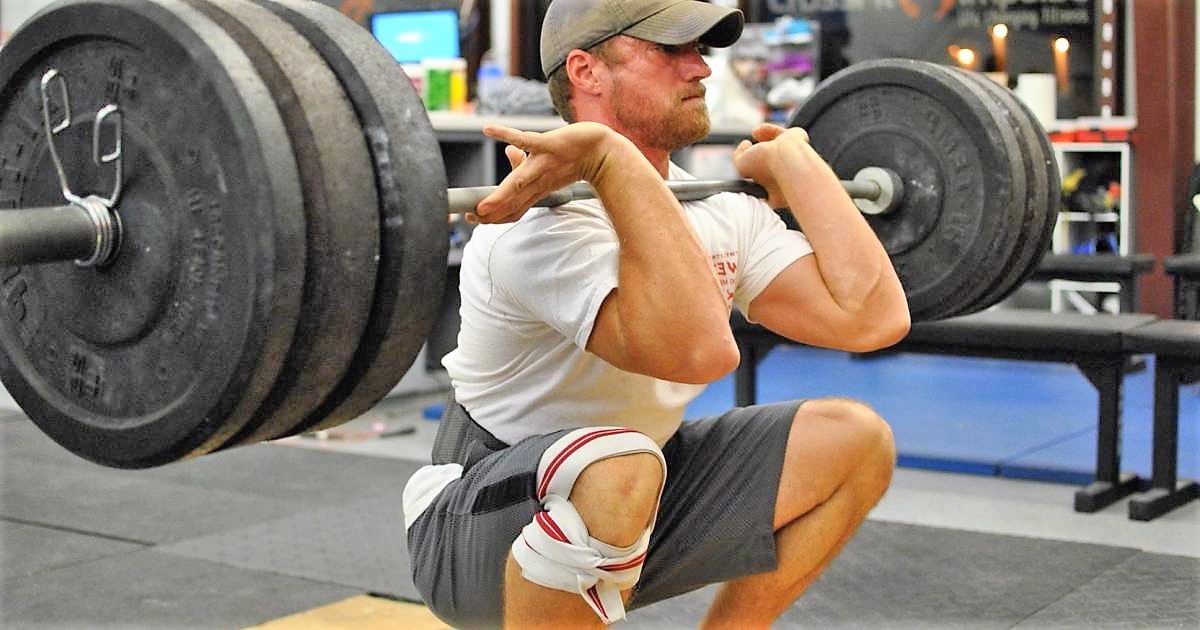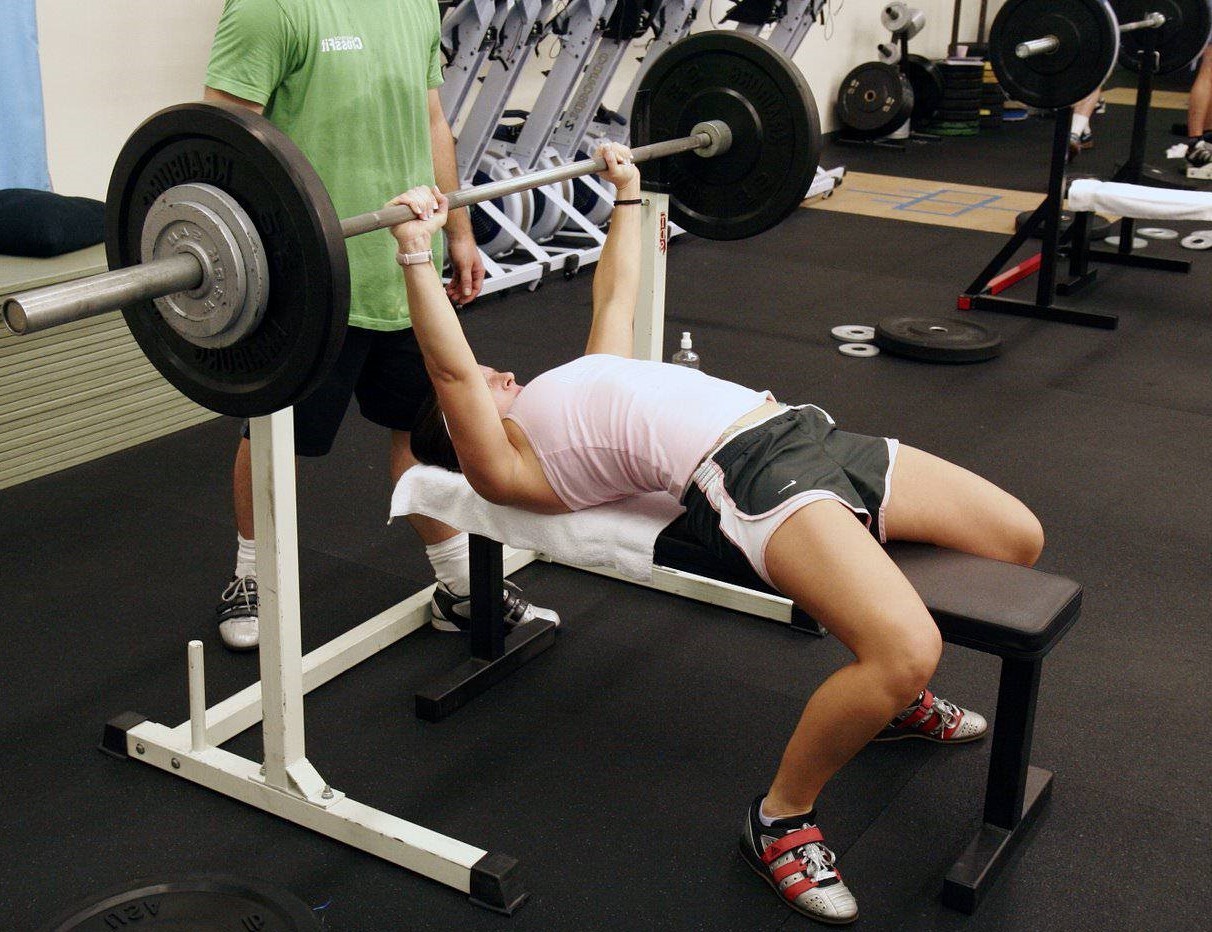As with a lot of other programming and technique posts, I’m not writing this article specifically to address late intermediate or advanced lifters. If you can easily squat close to double your bodyweight or double your bodyweight, then I don’t need to tell you why you should do one squat or the other. Elite FTS, Juggernaut Training and Greg Nuckols have repeatedly been proponents of mixing up T1 and T2, and training specifically for the competition back squat can mean sometimes doing other squat variations, as long as it has the carryover you’re looking for.
I’m speaking directly to the newbies here, kids, men, and women who are lifting with good form but aren’t at an advanced level. I belong to this here group as well, and this is advice I find incredibly important: you need several squat variations. The main reason for this is that a strong body makes a better squat.
You can use the same squat over and over again, but that breeds asymmetry in your strength gains, and while you do want to become technically proficient, the reality is that powerlifting lifts are very simple, and technical proficiency is a given if you just squat, deadlift, and bench press consistently for a few years.
If you want to get your numbers up, you have to start doing things you are not doing. That means trying other squat variations – to build stronger legs, better hips, a better upper back, and to make sure you’re mastering the ability to get down and get up again.
Why All the Squat Variations?
The primary competition squat is the low-bar squat, designed to allow most people to lift the most weight they possibly can. The reason the low-bar squat is popularly used to move monster weight is because:
- It’s the squat variation with the shortest distance between the bar and the hips.
- It’s the squat variation that puts the greatest emphasis on the hip hinge, which is stronger than a knee-dominant movement.
- It’s the squat variation that takes the back out of the equation as much as possible.
To recoup – all squats are inherently hip-dominant, in the sense that the hip is always going to do the bulk of the work. Whenever you descend into the bottom of your squat, your body will start at an angle and you’ll fight to get vertical. Even in a high-bar squat or front squat, coming out of the bottom of a 1RM involves an angled torso.
This is because all squat variations must be performed over midfoot, and that’ll naturally happen as you go heavier, or you fail the lift. You have to adjust your body under the bar to accommodate keeping it in midfoot. It’s impossible to keep a straight bar path in any squat without angling your torso as you go down. An argument can be made that you can keep perfectly upright in the front squat if you have great leverages, but not in back squats. If you have great long femurs, you’ll need to angle even more. Going for a wider stance and having ridiculous ankle mobility/squat shoes helps a lot, but the majority of people will start their squat upright, go angled, hit bottom, come up, and fight to get vertical again.
Fighting to Get Vertical
That doesn’t mean your squat should rise with your hips. It only means your hips are key to getting out of the hole, and they’re generally the strongest part of the squat.
That also means your legs are going to be hamstrung (pardon) by your back. You can usually leg press more than you can smith-machine squat, because even with balance taken out of the equation, your erectors and upper back muscles can’t compete with the musculature around the hips and thighs.
Building a strong back makes for a better squat. Squatting low-bar a lot makes for a better squat, too, but there are other ways to train the back.
Low-bar squatting is also quite hip-dominant. Not in a detrimental way, because your quads are still working very hard, but you can work them a little harder by bringing some variation into your squats. A lot of strength coaches are also big proponents of variation for the sake of not having you do the same thing over and over again. There’s the boredom argument, but there’s also the point that if you keep doing low-bar squats week after week after week, you’ll adapt very quickly to them and eventually stall, while trying out a different movement will cause your legs and body to grow in a different way, putting on more muscle, building more strength, recruiting your muscles in a different way, and allowing for a greater total on competition day when you finally step out onto the platform and give it your all. Let’s go over your squat repertoire.
The Holy Competition Squat
The low-bar squat is what matters the most here, and it’s your competition lift. If you’re not comfortable with this squat yet, chances are that it’s the bar position on your rear delts. Remember the cues – try to pull your elbows together as though you want them to touch behind your back, while simultaneously pulling the bar into your body. You can use wrist straps to protect your wrists if you can’t help but bend them, or work on your shoulder mobility.
In most people, the reason they can’t get into a proper rack position is because of tight anterior deltoids. Be sure to massage your anterior deltoids between sets and stretch them on your non-squat days. For the lower body, low-bar squats typically have the least amount of mobility requirement. You can’t hit ATG on a low-bar squat without collapsing the lumbar because of where the bar is positioned, but you can still get low enough to hit legal depth.
High-Bar Squatting for Quad Development
The high-bar squat is a low-bar squat with the bar on your traps. The low-bar squat is a high-bar squat with the bar on your delts. Both are roughly the same, with the major difference being that a higher bar position allows you to remain a little more upright throughout the movement, granting you a deeper bottom position (which is why this is what Olympic athletes train, rather than overloading on the low-bar squat at the cost of mobility), and greater back activation.
 Because the bar position will usually cause your knees to track ahead further than in the low-bar squat, you’ll get greater quad activation. Don’t worry about your knees going past your toes. This is just how the body works, especially for people with longer femurs (thigh bones).
Because the bar position will usually cause your knees to track ahead further than in the low-bar squat, you’ll get greater quad activation. Don’t worry about your knees going past your toes. This is just how the body works, especially for people with longer femurs (thigh bones).
Front Squat for Upper Body Strength
The front squat is the most demanding squat for your back, which is why it’s usually the squat with the least amount of weight on it. Olympic lifters with decades of training are capable of loading their front squat to spectacular levels – as are some powerlifters – but any back squat variation will always outdo the front squat if done right.
It’s also the most challenging lift for most in terms of mobility. You need adequate thoracic and shoulder mobility to perform a proper front squat – that means wrapping your hands around the bar completely, shelving it on your deltoids, and maintaining that position throughout the whole lift. Wrist flexibility is of little consequence here – I don’t have great wrist flexibility, but have no problem maintaining a front rack position. Squeeze your chest together and drive your elbows out and up as far as possible throughout the lift, and work on pushing your chest up. Lat stretches, cat-and-cow, and front squat isoholds will help you build the mobility you need. If you’re a bigger guy, chances are that your biceps are in the way of a full front squat. That can actually happen. If so, you can use front squat variations to make it a little easier, like using a safety squat bar or straps.
Paused Squats
Most people have a sticking point just a few inches above parallel, after coming out of the hole. The instinct then is to accelerate from the bottom, maintaining tension in the beginning of the squat right about before you hit the bottom, and then bouncing out – either through a stretch reflex, or the muscles’ inherent wish to straighten back out.
Paused squats are an excellent way to target this weakness and build quad strength and size at a lower weight. But you have to do them right. The main thing you have to keep in mind is that most people tend to hit a lower depth when doing paused squats. This is because it’s more comfortable to just let your hips sag a bit and use the opportunity to stretch – but that’s not what you should be doing. This isn’t a mobility accessory, it’s for strength. That means closely examining your depth throughout your squats and maintaining said depth during the pause squat. This will also be more demanding on the quads and hips and build much stronger legs.
Speaking of which, that’s advice you should carry over for all your squats – maintain the same depth throughout all your sets. It’s obvious that your high bar or front squats will look different but maintain the same depth in both warmup sets and heavier sets, rather than going deep for warmups and pulling your squats as the weight becomes intimidating.
Hack Squat Variations for Growth
I know, machines are the devil, but I’m a fan of hack squat machines or Smith machines for 1.5 squats – the kind where you hit bottom, come up halfway, then hit bottom again, then shoot up for a full rep. Time under tension is still the bread-and-butter of hypertrophy, and for the legs, there are few things as effective as just putting your legs to work.
 Use these for when you’re having a good day and you’re done with all your sets, and just want a little extra something to finish the workout on a sick pump.
Use these for when you’re having a good day and you’re done with all your sets, and just want a little extra something to finish the workout on a sick pump.
And that’s pretty much it. You don’t have to do each and every variation – do two at least, either alternating if you squat twice a week, or low-bar squatting twice and high-bar/front squatting once if you train your squat thrice a week. You can also use the low-bar squat as your T1 on the first squat training day, use front squats as your T2, then use high-bar squats and one other variation as your T1 and T2 on the second squat training day. Play around, see what you like, and what you respond to best.




